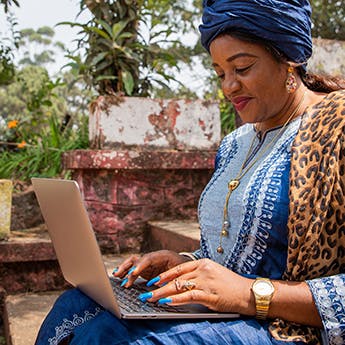
Resources
Analyzing the Building Blocks of Resilience: Findings from a Baseline Survey of the Tuungane Population, Health, and Environment Project in Western Tanzania
Publications
Previous

Intimate Partner Violenc...
Next

PMA2016/TARABA-R1
Partners:
TanzaniaIn recent years, the concept of resilience has gained increasing attention as a crucial component in efforts to promote economic growth and development. This is particularly the case for countries where a large share of the population faces chronic poverty, poor health, and repeated economic and environmental shocks. One international donor agency defines resilience as “the ability of people, households, communities, countries and systems to mitigate, adapt to and recover from shocks and stresses in a manner that reduces chronic vulnerability and facilitates inclusive growth.”(USAID 2012) Although definitions of resilience vary, they typically reflect a commitment to reducing vulnerability and building households’ and communities’ adaptive capacity to quickly and effectively respond to new circumstances.
Two key elements important for resilience—yet often omitted from resilience programs and definitions such as the one above—are the need to meet demand for voluntary family planning (FP), and to help people adapt to climate change. Voluntary FP allows women to avoid unintended pregnancies and to time and space their births, leading to short- and long-term benefits that can promote resilience. Evidence shows that avoiding unintended pregnancies and planning the timing and healthy spacing of pregnancies can lead to better health and reduce deaths among mothers and children (Sing, Darroch, and Ashford 2014). In addition, when women spend less time and energy in pregnancy, breastfeeding, and child care because of greater access to sexual and reproductive health services, they are more likely to expand their participation in livelihoods and the labor force, and to attain more education. These outcomes can lead to improved earnings that in turn can be used to improve household health, nutrition, and food security, enhancing their household’s ability to cope with and bounce back from shocks. Further, reinforcing a woman’s right to choose whether or not to have children, as well as how often and how many, increases equity and may be a crucial component of building resilience, especially for rural women who often live far from health services. At the population level, equitable access to voluntary FP can contribute to building resilience by reducing population growth and supporting healthier, more stable family units, thereby allowing communities and governments to better keep pace with the provision of basic social sector services (Bremner, Patterson, and Yavinsky 2015).
Helping communities adapt to and address the impacts of climate change by protecting natural resources such as forests, marine ecosystems, and coastlines can also go a long way to building resilience. Reducing deforestation and degradation and protecting forests are important means of mitigating climate change, since trees function as a carbon sink, reducing the amount of greenhouse gases in the atmosphere (Bonan 2008). In rural areas where rapid natural population growth and in-migration coincide with rapid deforestation, deforestation is often driven by small-scale farmers who clear land to make room for agriculture (Rudel et al. 2009). Drivers of deforestation are complex, however, given that rapid urban population growth drives demand for agricultural products, and powerful forces and interests such as global agricultural trade and land speculation are also at play (Rudel et al. 2009; DeFries et al. 2010). In the Tuungane Project area, land grabs by cattle herders are also a source of deforestation, especially around villages with boundaries that have not been formally established.








